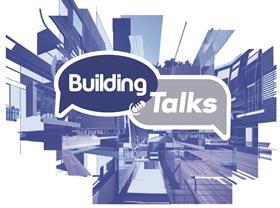We have dealt with huge challenges over the past two years, but they have only created more hurdles for our industry to negotiate in 2022

When I was asked to file my new year column by the Building editorial team, there was an acknowledgement that, with constant change still happening within the industry and beyond, it might not be possible to hold up a crystal ball and assess what lies ahead.
As we enter 2022, however, if there is one thing that we do know, it is that the unpredictability that we have found ourselves in since 2020 is certain to continue. Yet with this uncertainty will come a level of certainty.
It is certain that 2022 will be a year when the aftershocks of the past two years will come into play. While 2021 was the year when government showed its confidence and investment within the construction industry as an economic enabler, there is no doubt that financially we are going to see pressure within our sector as inflation continues to rise, possibly even to 5 or 10%.
With rising inflation will come an increase in prices; with claims and settlements will come more financial pressure for some
Many of the disputes and claims that are a direct result of the pandemic, Brexit and the events of the past two years will also come to a head as they reach courts and settlements are made. With both these things hitting the industry in 2022 the impact on our sector will be felt: with rising inflation will come an increase in prices; with claims and settlements will come more financial pressure for some.
And of course covid has not gone away, with Omicron cases still rising daily. This ongoing toxic mix of physical health risks and financial uncertainty will inevitably lead to more mental health pressures and a rise in business failures.
But, with these aftershocks, and with every shake-up in a market, will come transformation. I predict that our market is ripe for radical innovation and my feeling is that this will come with new players entering the arena – more than likely global entrants from either Asia or North America rather than Europe.
I also believe that there will be a fresh perspective brought to some of the challenges that lie ahead for the built environment, with solutions from different sectors such as the standardisation and logistics planning we now take for granted in shipping and the automotive industry.
And what are the challenges that will remain in 2022 and beyond? The biggest by far will be the environmental crisis. The decarbonisation of our existing housing stock will of course take far more than the next 12 months to implement.
Although talk and recognition of what we now need to do has heightened considerably in the wake of COP26 and other prominent events, this is the year when we need to start seeing significant action, at scale, to ensure we meet our carbon zero targets, we reduce air pollution, we look to minimise waste and protect our land, communities and the surroundings within which we build.
Tackling the inequalities in regional productivity to spread greater opportunity and prosperity wider in the post-Brexit era is a long-term goal not an overnight fix
Likewise, the levelling up agenda – although it has had growing awareness with many column inches discussing how we flatten the regional divide – will still be challenging to our sector in 2022. Tackling the inequalities in regional productivity to spread greater opportunity and prosperity wider in the post-Brexit era is a long-term goal not an overnight fix, and much still needs to be achieved this year and beyond to bring about regional parity.
By continuing to invest in transportation, broadband and regional development the government is making a significant commitment to levelling up. As an industry we must institutionalise the creation of social value. This can no longer be an add-on, but an intrinsic part of what we do.
The North Shropshire by-election was a case in point. While by-elections are often seen as protest votes, in a constituency that has had an MP from the same party for more than 200 years the victory of an opposition party demonstrates a level of fatigue and possibly mistrust which underlines the need for government to show leadership in levelling up and the creation of value.
Then comes the digital transformation. Will 2022 be the year of the construction digital revolution? In my opinion possibly not. Although there is no doubt we will continue to head in the right direction, there still feels like so much of the digital jigsaw puzzle still to be put in place before we really digitalise our industry.
As with a fitted kitchen, until there is a standardisation across our components – like the modular 600mm x 600mm kitchen units – we cannot and will not be able to effectively maximise the efficiency that a standardised digital approach should bring and good practice will not be transferred across the majority of our schemes and projects.
With digital uptake still patchy, the industry is ripe for some major innovation, perhaps from an external party
That said, we continue to see high levels of interest in construction from IT companies – and with digital uptake still patchy the industry is ripe for some major innovation, perhaps from an external party.
Which brings me back to a more recent column around the challenge of our two-speed industry. While we operate in a sector where we have on the one hand big construction organisations and then on the other hand over a million smaller providers and sub-contractors, these challenges will be caught between the two stalls.
The larger, heavily invested companies will meet some of these issues head on in 2022, and look to bring in modern methods of construction, recruit and retain from across the social divide, make great strides in ensuring environmental best practice exists and survive the inflationary pressures. But for others this year will be about how to deal with these macro challenges and continue to exist.
Maybe the real challenge ahead goes back to simple collaboration and how we as an industry work together to future-proof ourselves as much as we can, not just for 2022 but for the future of our industry as a whole.
Ann Bentley is a global board director of Rider Levett Bucknall, a member of the Construction Leadership Council and a collaborator on the Value Toolkit
Building Talks Net Zero podcast out now

You can hear interviews recorded at COP26 in the Building Talks Net Zero podcast out now. Interviewees include Gregor Craig, Skanska UK chief executive, Hannah Vickers, Mace chief of staff, and Sarah Linnell, engineer at Cundall, who chaired the CLC event at COP26.
>> Click here to find out more and for details of how to subscribe to the series



























No comments yet